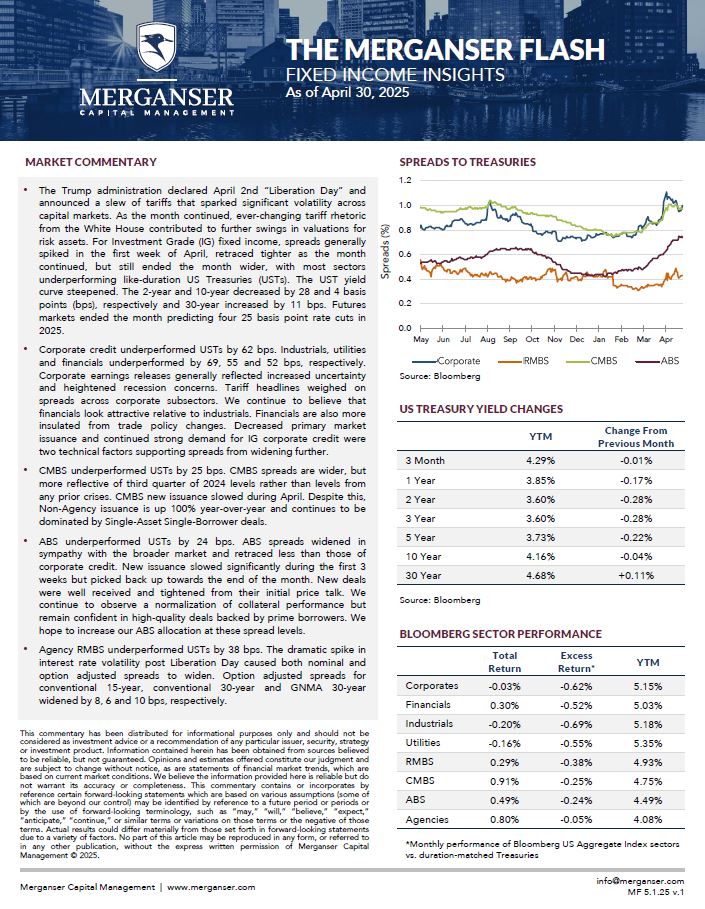- The Trump administration declared April 2nd “Liberation Day” and announced a slew of tariffs that sparked significant volatility across capital markets. As the month continued, ever-changing tariff rhetoric from the White House contributed to further swings in valuations for risk assets. For Investment Grade (IG) fixed income, spreads generally spiked in the first week of April, retraced tighter as the month continued, but still ended the month wider, with most sectors underperforming like-duration US Treasuries (USTs). The UST yield curve steepened. The 2-year and 10-year decreased by 28 and 4 basis points (bps), respectively and 30-year increased by 11 bps. Futures markets ended the month predicting four 25 basis point rate cuts in 2025.
- Corporate credit underperformed USTs by 62 bps. Industrials, utilities and financials underperformed by 69, 55 and 52 bps, respectively. Corporate earnings releases generally reflected increased uncertainty and heightened recession concerns. Tariff headlines weighed on spreads across corporate subsectors. We continue to believe that financials look attractive relative to industrials. Financials are also more insulated from trade policy changes. Decreased primary market issuance and continued strong demand for IG corporate credit were two technical factors supporting spreads from widening further.
- CMBS underperformed USTs by 25 bps. CMBS spreads are wider, but more reflective of third quarter of 2024 levels rather than levels from any prior crises. CMBS new issuance slowed during April. Despite this, Non-Agency issuance is up 100% year-over-year and continues to be dominated by Single-Asset Single-Borrower deals.
- ABS underperformed USTs by 24 bps. ABS spreads widened in sympathy with the broader market and retraced less than those of corporate credit. New issuance slowed significantly during the first 3 weeks but picked back up towards the end of the month. New deals were well received and tightened from their initial price talk. We continue to observe a normalization of collateral performance but remain confident in high-quality deals backed by prime borrowers. We hope to increase our ABS allocation at these spread levels.
- Agency RMBS underperformed USTs by 38 bps. The dramatic spike in interest rate volatility post Liberation Day caused both nominal and option adjusted spreads to widen. Option adjusted spreads for conventional 15-year, conventional 30-year and GNMA 30-year widened by 8, 6 and 10 bps, respectively.


